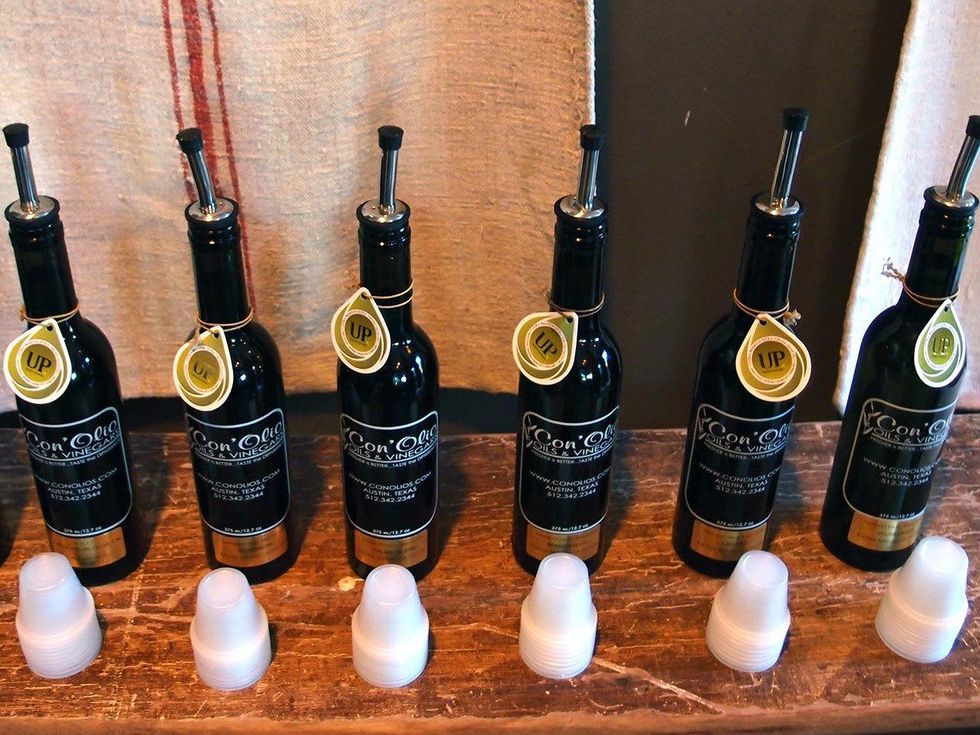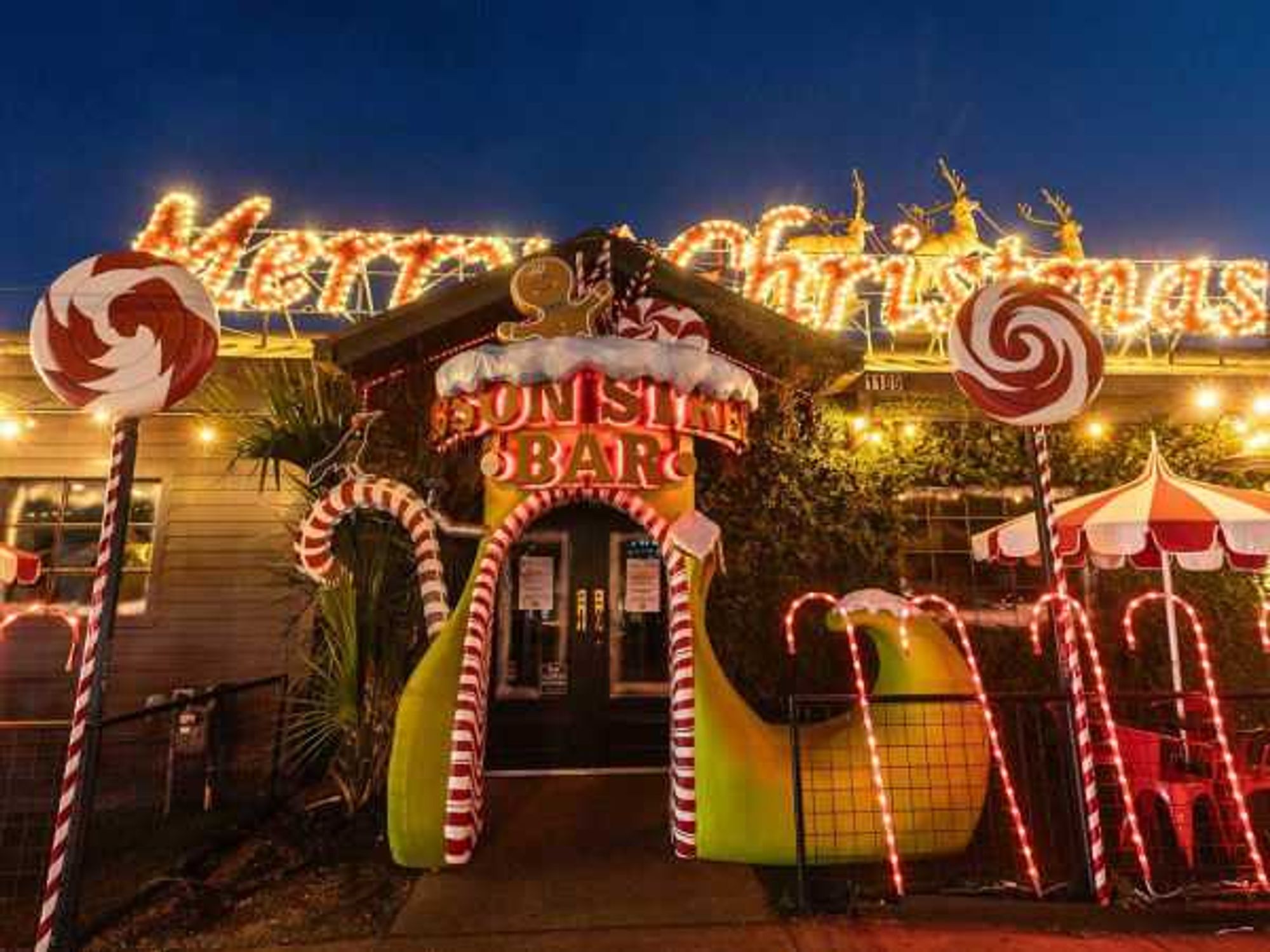The Magic of Olive Oil
Con'Olio and Olive & June team up to make olive oil a star ingredient
Olive oil often is a component of a dish, but it's not usually the star. At Con'Olio, an Austin food shop that specializes in premium oils and vinegars, picking the right olive oil is a key consideration for any recipe, no matter what role the oil plays in the dish.
Owner Jeff Conarko, a certified expert olive oil sensory evaluator — the equivalent of a sommelier for olive oils — is passionate about sharing the diverse characteristics of the oils and how they can make any meal better. For a recent dinner at Olive & June, he selected olive oils for chefs Shawn Cirkiel, Justin Rupp and Steven Cak to use in a seven-course meal.
Southern Hemisphere oils are harvested in April and May, making them perfect for fall dining in Austin.
Conarko chose Southern Hemisphere oils — from Australia, Chile and Peru — rather than the more well-known European or American varieties to use the freshest product possible. Because oils produced in the Northern Hemisphere are harvested and pressed in the fall, last year's batch is almost a year old and would have lost flavor over time.
Southern Hemisphere oils are harvested in April and May, making them perfect for fall dining in Austin. "As olive oil ages, it becomes rancid and begins to taste like stale peanuts," Conarko says. "Terroir, or where the olives are grown, is far less important than freshness and the quality of the pressing process."
Dispelling a few myths about olive oil, he explained that it can be used for any part of the cooking process, including frying. "The smoke point of olive oil drops as it ages," he says. "First-press olive oil has a smoke point of 500 degrees. If you buy a young olive oil, you could use it to fry chicken."
Conarko also explained that because there is no regulation of olive oil in the United States, it is easy for consumers to be fooled into buying something that is labeled olive oil but is really generic vegetable oil. "Look for a harvest or crush date that is less than a year old and the UP, or ultra premium rating, that we helped create to indicate to shoppers when they are buying a quality product."
"The olive oil should be a trampoline for the flavors in the dish, not dampen it," says Con'Olio owner Jeff Conarko.
Con'Olio provides tasting notes for each of its oils based on the assessment of a tasting panel. The oils are rated on qualities like fruitiness, bitterness and pungency; they are also given an intensity from light to robust. Conarko also said the right oil can elevate a dish, noting, "The olive oil should be a trampoline for the flavors in the dish, not dampen it."
Chefs Cirkiel and Rupp captured the subtle differences of the oils in their tasting menu. Housemade burrata with green onions was paired with a sweet Leccino-Alonso olive oil from Chile, while the monkfish was poached in a spicy Koroneiki-Alonso oil that replaced the black pepper in the dish.
The nutty Manzanillo-Cobram Estate oil added extra flavor to the basil pesto in the early fall minestrone, and the grassy, spicy FS17-San Pietro olive oil mellowed the grilled lamb loin. One of the most popular dishes of the evening was Cak's dessert, which incorporated a Croatian-Zumaq olive oil from Peru in a blood orange olive oil cake and olive oil gelato.
Pier Manna of Serendipity Wines paired each dish with an Italian wine selected to highlight, not overpower, the oil. The crisp, effervescent Branchini Pignoletto Frizzante balanced the richness of the burrata without masking the sweet onion and olive oil. The delicate Santome Santhomas, a sparkling blend of Pinot Noir and Pinot Grigio, brought out the gentle flavors in the brothy minestrone; the sweet Gemma Rubia Lambrusco dolce added a touch of sugar to a more savory dessert.
Through this dinner, Conarko — who is opening a third Con'Olio this fall, at the Shops at the Galleria — and the Olive & June chefs illustrated that understanding how the flavors of the ingredients balance each other can elevate a meal.







 The Santa Pants cocktail at Punch Bowl Social Punch Bowl Social
The Santa Pants cocktail at Punch Bowl Social Punch Bowl Social  Justine's is going surreal this winter.Photo courtesy of Justine's
Justine's is going surreal this winter.Photo courtesy of Justine's